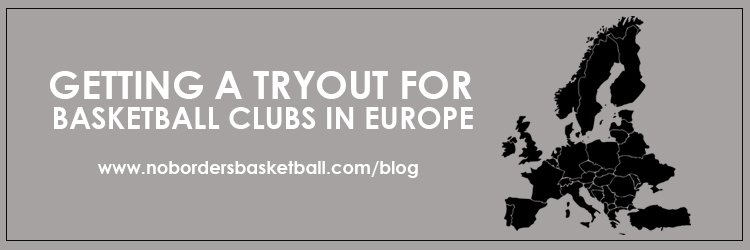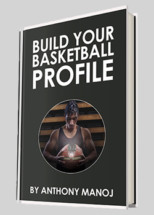Surprisingly, getting a tryout for basketball clubs in Europe is very easy. Well it is if you are in the area. In summer many of the teams in Europe run summer league games where players can join a team in the hope of making the roster.
Here are some steps getting a try out for a club in Europe.
- Research clubs and country
Be prepared, have an idea where you would like to go play. Get down to specifics if you have to, in that I mean find a city or area with a high volume of basketball clubs. A great way of doing that is by going to www.eurobasket.com and searching for clubs in the country of your choice. - Calling the club and speaking to a coach
This step isn’t really that important if you are trying out for teams that are in division 3 or below but rule of thumb when trying out for the more professional clubs is to call ahead. Don’t bother speaking to office staff, always try and talk to the coaching staff or the team manager. Trust me, do yourself a favour and have an initial chat. Sometimes especially in summer it is really hard to get hold of these people. Do not give up, keep calling. Even if you have to leave a hundred messages with receptionists.When you do speak to the coaching staff, treat the phone conversation as you would a job interview. Always greet the person you talk to in the country’s main language. It also doesn’t hurt to also learn a few other words you can use.For more info on talking to and contacting coaching staff have a look at my post on Contacting Coaching Staff - Scheduling training session
Most European clubs will train between Monday and Thursday. The main days are actually Tuesday and Thursday over the summer period. Easiest way to schedule sessions is to add it to a weekly planner. An example of this can be found here including a FREE downloadable planner.
View my TRYOUT SCHEDULE example
View BLANK TRYOUT SCHEDULE
Remember when doing your weekly plan it is important to schedule travel time and rest periods. There’s no point going to tryouts tired and drained. I usually schedule one try out a day (but I am quite old now and the body does not recover as fast as it did when I was in my 20’s). I like to have long periods between training sessions to get my food and fluid intake perfect to help my body perform at its best come training time. - Pick a base location
Picking a base location will easily help plan how many try outs you can fit in the week. Making a team in Europe is a numbers game. How many try outs can you fit in a week (without being tired)? After you pick the country and city you’d like to visit find a hostel (or hotel if you have some spare cash) that is close to transport and is central to most clubs.www.hostels.com and www.hotels.com is a couple of great sites to find accommodation. If you are on a budget I suggest you go with the hostel option. Cheap accommodation with (usually) friendly staff that are keen to help. This is also a great way of meeting fellow travellers. - Get to practice early
Rule of thumb, get to practice at the very least 30 minutes early. I always get the training facility an hour and a half to an hour before practice starts. This is a great way of speaking to the coach before all the other players come in. It is also a great way of making a good first impression. - Making yourself know to the coaching staff and players
As I have mentioned previously trying out for a basketball team is like any other job interview. First impressions LAST! When you walk into the training facility quickly identify the coaching staff; ask people if you have to. When you do identify them go and introduce yourself IMMEDIATELY. Have a firm handshake look them in the eye and say your name. In most occasions they will ask you what your basketball experience is. At least, this has been the case with me all the time. I guess I don’t look like the conventional basketball player but be prepared for a series of questions. Most top tier basketball clubs don’t really like walk ons but if you are a keen baller with some decent experience they will definitely let you train. Big bit of advice, when meeting coaching staff do not be overwhelmed. Be confident but not cocky.Professionalism is the best way to approach the first meeting.Try and identify the permanent players on the team. Be friendly with those that are trying out with you. This is why getting in early is important. When I am warming up and getting some shots up I try to strike a conversation with the people around me. Generally players like you that are new and attending their first second or third training session will be open and happy to talk. I have found that permanent players training are a little bit more stuffy. In that I mean that they stick to their circle of team mates. Don’t let this intimidate you, introduce yourself much the same way you do to the coaching staff.Why make such a big deal introducing yourself? Well, it breaks barriers. You are more likely to get a pass from someone you have made an effort to meet than someone you just didn’t bother speaking to. I have learnt this the hard way! Make the effort, if you don’t you won’t get the ball.
These are six steps that can help you schedule training sessions and tryouts for teams in any league or country. These steps I use myself to make various teams in Europe.
Thanks again for listening to the podcast if you enjoyed it please share using the social media buttons located when hovering over the author picture at the top of the page and if you like to leave some honest feed back do so by commenting below.

